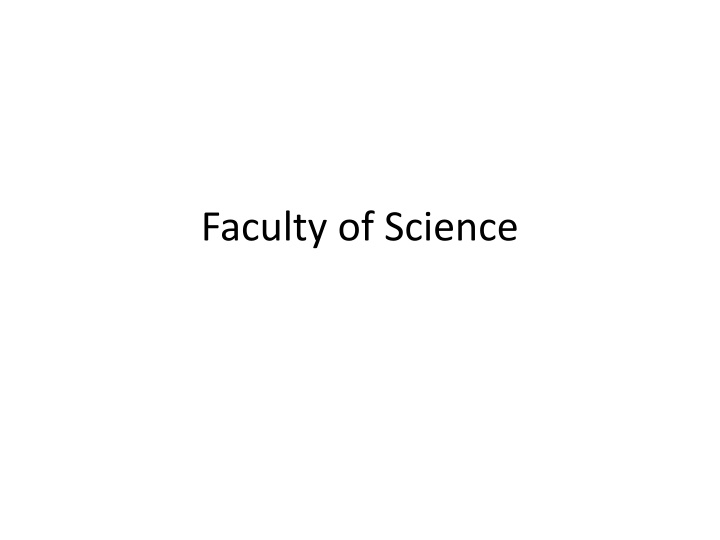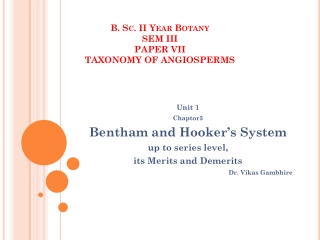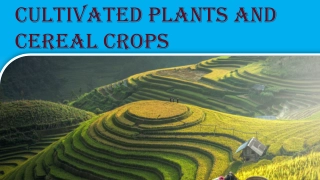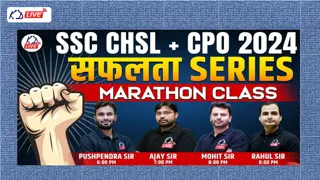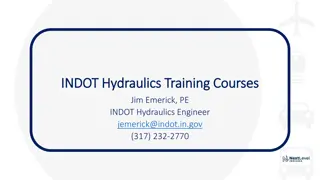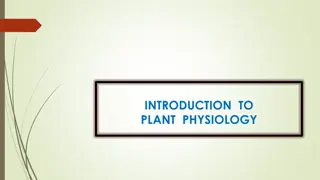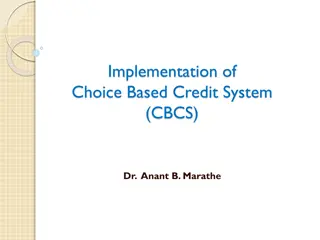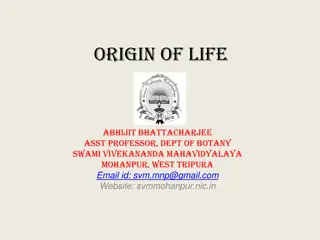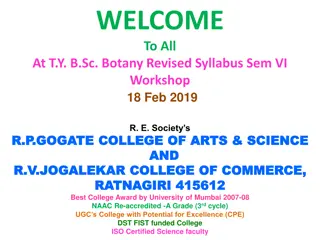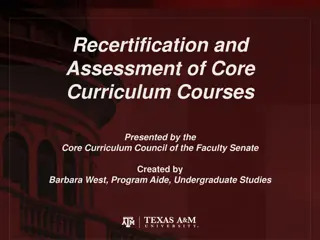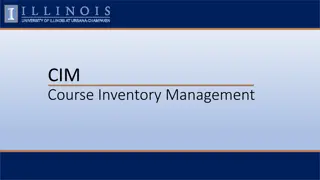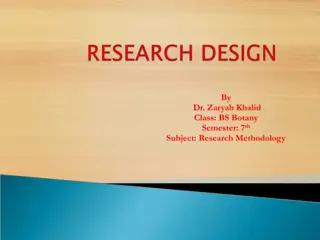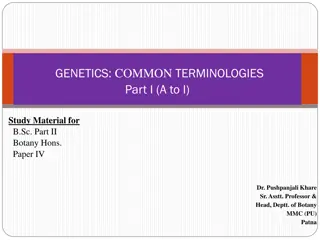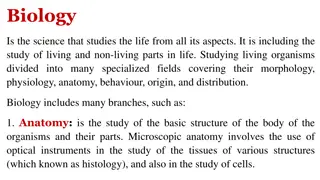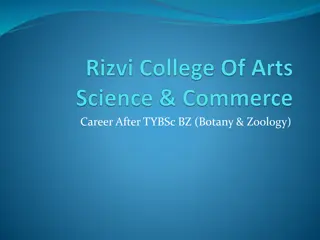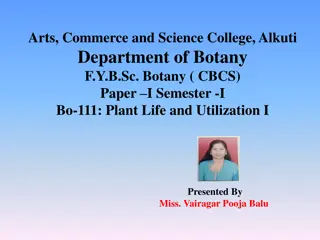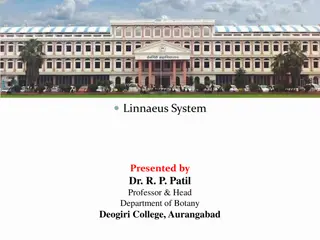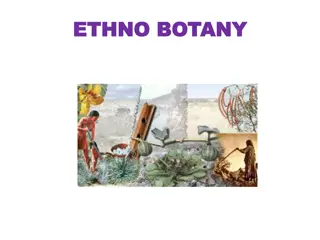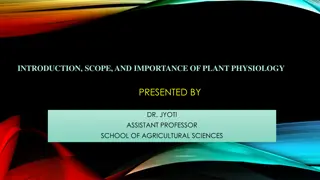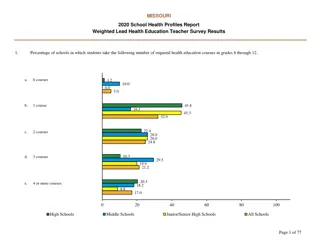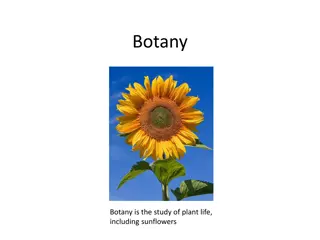Exciting Courses in Botany and Physiology
Dive into a world of fascinating subjects with courses in botany and physiology. Explore topics such as plants in human welfare, respiratory physiology, endocrine functions, and more. Enhance your knowledge and understanding of the intricate workings of the natural world and human body.
Download Presentation

Please find below an Image/Link to download the presentation.
The content on the website is provided AS IS for your information and personal use only. It may not be sold, licensed, or shared on other websites without obtaining consent from the author.If you encounter any issues during the download, it is possible that the publisher has removed the file from their server.
You are allowed to download the files provided on this website for personal or commercial use, subject to the condition that they are used lawfully. All files are the property of their respective owners.
The content on the website is provided AS IS for your information and personal use only. It may not be sold, licensed, or shared on other websites without obtaining consent from the author.
E N D
Presentation Transcript
Department of Botany Open Course offered to students of other Department SEMESTER II Course Subject Points Credits Hrs./Wk. BOOCT2.1 Plants in human welfare 100 4 4 EVALUATION SCHEME - THEORY Internal Assessment (20) + Term End Examination (80) TEE: 80 points Theoretical course BOOCT2.1 Plants in human welfare TEE points: 80 Classes/ Semester: 80 1. Know your plants 2. Exploitation of microbes 3. Mushrooms their uses and cultivation (8) 4. Environmental clean-up by plants 5. Stress in plants 6. Genetically modified crops 7. Exploitation of plant resources 8. Conservation of plants 9. Plants in forensic science 10. Intellectual Property Rights ***** ***** ***** (12) (8) (8) (8) (8) (8) (8) (8) (4)
2nd Semester Programme in Physiology January to June (Even semester) Detail of courses and components 400 Marks 16 credits ------------------------------------------------------ Course-201 (100 Marks: Credit = 4) (Open Elective) Lectures = 60 For Inter Departmental students
Course-201: Fundamentals in Physiology (60) I. General Physiology Concept of Homeostasis Ionic Equilibrium and Resting Membrane Potentials, Action Potentials Nerve Impulse Conduction, Mechanism of Synaptic Transmission Introduction to Membrane Receptors, Second Messengers, and Cell signaling Ageing and Apoptosis Elementary idea of Muscle and Nerve Concept of human body clock. II. Respiratory Physiology Physiology of Breathing Oxygen and Carbon Dioxide Transport Gas exchange at lungs and tissues Regulation of Respiration and Pulmonary Function Test. III. Hematology Concept of Circulating Body Fluids Leukocytes : Ultra structure and Functions Thrombocyte (Platelet) and Hemostasis Erythrocyte (RBC) Blood Types and Transfusion Basic concept of immunity
VII. Endocrine and reproductive Physiology General principles of endocrine physiology. Endocrine glands and their functions. Sex determination. Structure and Function of male and female reproductive organ. Infertility concept of Test Tube baby. Family Planning to control population. IX. Renal Physiology Overview of renal function Formation of Urine Role of kidney in fluid and mineral homeostasis. Renal function test and renal disorders.
IV. Cardiovascular Physiology Anatomy of Heart Cardiac Pacemaker and Special Junctional Tissue Cardiac Cycle ECG Cardiac Diseases Cardiovascular Regulatory Mechanisms Special Circulations V. Gastrointestinal Physiology Anatomy of GI system Motor and secretory function HCl secretion and Gastric ulcer Digestion and absorption of food staff, minerals and water Entero-hepatic circulation, Liver and gall bladder diseases Basic concept of human nutrition, Protein and energy Malnutrition VI.Nervous System Central, Autonomic and Peripheral Nervous System Basic Structure and function of Brain and Spinal Cord Memory and Intelligence, Memory related disorders- Alzheimer disease Language functions- aphasia Hunger and Satiety Sleep and EEG Body temp Regulation Emotion Control of body posture Special sense organ : Structure and Functions.
Department of Ecological Studies Faculty of Science University of Kalyani, Kalyani- 741235, West Bengal Syllabus for Open Choice Paper on Basic Environmental Management (Full Marks: 100) Credit:4
Basic Environmental Management Environment: Basic concepts on environment and its spheres: atmosphere, hydrosphere, lithosphere, biosphere, anthroposphere; environmental worldviews; Green movements Ecology: Ecosystem: Components and kinds; food chain and food web; energy flow; ecosystem services; biogeochemical cycles; productivity; carrying capacity Environmental Pollution: Causes/sources, impacts and control of (a) Air pollution, (b) Water Pollution, (c) Soil Pollution, (d) Noise Pollution, (e) Radiation Pollution Energy Resource Management: Renewable and nonrenewable resources; Conventional and non-conventional and renewable energy resources; fossil fuels, solar energy, wind energy, tidal energy, ocean energy (OTEC), geo-thermal energy; biomass energy, bio-fuel; nuclear energy; Strategies for energy conservation and management Natural Resource Management: Conservation and management of freshwater resources; integrated water resource management; rainwater harvesting; watershed management; environmental issues of lakes, dams and reservoirs; river linking and its impacts; integrated coastal zone management (ICZM); Management and control of soil degradation and soil erosion; integrated strategies for soil conservation and regeneration; strategies for wetland conservation and management Bio-resource Management: Biodiversity Concept, values, and conservation and management strategies; Peoples Biodiversity Register (PBR); Forest management (including agro-forestry, social forestry, Joint Forest Management); wildlife conservation (both in situ and ex situ) and management
Waste Management:Concept of waste, types, Management of Solid Wastes & hazardous wastes; management of e-wastes; management of biomedical wastes; composting and vermi-composting; wastewater treatment Environmental Management and its Tools: Basic concepts and approaches of environmental management; perspectives and priorities of environmental management in India; Environmental Management Systems (EMS); ISO systems and certification procedure; Pollution prevention; environmental Impact Assessment (EIA)- principles, characteristics, steps; methods; environmental audits; green accounting and reporting; life cycle analysis (LCA), benefit cost analysis (BCA); green tax and green subsidy; Basic ideas on eco-labeling, ecological footprint and emission trading (carbon trading) Environment Related Acts and Rules: The Environment (Protection) Act, 1986; The Air (Prevention and Control of Pollution) Act, 1981; The Water (Prevention and Control of Pollution) Act, 1974; The Biodiversity Diversity Act, 2002; Conventions on Biodiversity (CBD, 1992); Biological Diversity Rules, 2004; Forest (conservation) Act, 1980; Wildlife Protection Act, 1972; Municipal Solid Wastes (Management and Handling) Rules, 2000; Hazardous Wastes (Management and Handling) Rules, 1989; Bio-medical Wastes (Management and Handling) Rules, 1998; Basel Convention for trans-boundary movement of hazardous wastes; EIA guidelines -1994, notification of the Government of India, 2006; United Nations Frame Convention on Climate Change (UNFCCC)
SEMESTER-II Paper V: [OPEN COURSE] (Total Credit - 4, Total Marks 100) Group A: Earth and Society (Marks - 50: Internal Evaluation 10, Semester-end Examination - 40) Ecological system of the earth- atmosphere, lithosphere, hydrosphere and biosphere; endogenetic forces- interior of the earth and surface configuration; exogenetic forces and resultant landforms fluvial and arid landforms; concept of land and land use; land capability classification, carrying capacity of land; measuring land surface-concept of scale and map, procedures of land survey and map making using tape and theodolite; Concept of society and space, material and social space, social structure and social processes, cultural realms, cultural diffusion; rural and urban settlements and its classification; Human Development Index; sustainable development
Group B: Geography of Resources and Hazards (Marks - 50: Internal Evaluation 10, Semester-end Examination - 40) Concept and classification of resources, conventional and non-conventional resources, distribution of energy resources (coal and mineral oil), crisis, conservation and management of resource; major economic activities- primary, secondary and tertiary activities; Concept of hazards and disasters; physical hazards: tropical cyclone, flood, land slide with reference to West Bengal; social hazards: poverty and crime; management of hazards and disasters Mode of Internal Evaluation: For Group A Class test For Group B Individual term paper on any hazard in West Bengal
C. B. C. S. Syllabus for Chemistry CHEM O-23 (Chemistry: Concept and Applications) Unit 1: Thermodynamics and Chemical Kinetics Basic chemical thermodynamics: system and environment, intensive and extensive variables, state of a system, state functions, internal energy, entropy, free energy, reversible, irreversible, adiabatic, isothermal processes, three laws of thermodynamics. Basic chemical kinetics: concept of rates and rate constants of chemical reactions, zeroth order, 1storder and 2ndorder chemical reactions, determination of rate constant (elementary idea only). Unit 2: Essentials of Inorganic chemistry Werner`s theory, Coordination compounds: geometries, VB, CFT and MO to understand simple metal-ligand bonding; Isomerism, Spin-only magnetic moment of d and f block elements, Colors and d-d transitions; Classification of metal ions present in various biological systems. Toxic metal ions and their effects, chelation therapy, Pt and Au complexes as drugs (examples only), metal dependent diseases; Theories of catalysis: Principles and applications of homogeneous and heterogeneous catalysis, various actions of promoters/poisons and inhibitors, catalysis by metal ions in industrial and biological processes.
Unit 3: Bioorganic chemistry Structure, stereochemistry and utility of natural and unnatural compounds, carbohydrates, biopolymers, nucleic acids, amino acids, peptides, drug molecules. Unit 4:Exploring Chemical Analysis Sampling, general protocols, classification and overview on some selected analytical techniques. Principle and instrumental features of spectrophotometry, thermogravimetry and voltammetry. Applications of various analytical techniques in different fields such as biology, pharamaceuticals, agriculture and environment. Unit 5: Characterization and analytical tools in chemistry Concept of surface tension, viscosity, conductivity in chemical systems, Infrared, UV-Vis, Atomic absorption and emission, Electrochemistry.
Department of Microbiology Open Course offered to the students of other Departments. Maximum capacity: 25 Total Lecture periods Course Name of the Course Microbes and sustainable Development 1. Definition and concepts of sustainable development, issues in Sustainable Development, Strategic Planning for Sustainable Development. 2. Microbes and its suitability in sustainable development: Brief account bacterial cell structure, metabolic diversity, different niche occupancy 3. Concept of antisepsis, disinfection and sterilization Marks Credits Hrs/Wk MB 2.4.4 100 4 4 60 Content & No. of Classes 3 4 3 4. Modern approach of bacterial classification 3 5. Microbial Growth characteristics, strategies of cell division, stress response 3 6. Genetic recombination in bacteria, transformation, conjugation, transduction and sex-duction. 5 7. Signal transduction in bacteria, regulation of signaling pathways, bacterial and plant two-component systems, bacterial chemotaxis and quorum sensing. 8. Host parasite interaction Recognition and entry processes of different pathogens like bacteria, viruses into animal and plant host cells, alteration of host cell behavior by pathogens, virus-induced cell transformation, pathogen-induced diseases in animals and plants. 9. Microbial production: Microbial fermentation and production of small and macro molecules. 8 10 6 10. Microbes in environmental management: Bioremediation and phytoremediation, Biosensors 3 11. Microbes in healthcare: antibiotics and drug developments 3 12. Microbes in agriculture: crop improvement and protection 3 13. Microbes in food processing 3 14. Microbes in bio-hydrometallurgy and fuel industry 3
DEPARTMENT OF MOLECULAR BIOLOGY & BIOTECHNOLOGY UNIVERSITY OF KALYANI [CBCS based Open Choice Course Content] [Academic Session 2017-2018 onward]
Name of the Course: Fundamentals of Biotechnology 4 credits (100 marks) 1. a) Conventional Plant Breeding & Plant Cell,Tissue Culture,a brief idea of Plant culture medium,Callus and Cell culture; Protoplast culture and fusion, Anther and pollen culture, Morphogenesis, Somaclonal variation, Micropropagation, Role of plant tissue culture in conservation of germplasm b) Genetic Engineering of Plants: Basic techniques of genetic transformation: Agrobacterium mediated and direct nuclear transformation; Development of biotic and abiotic stress tolerant plants; Modification of plant nutritional content; Modification of food plant taste and appearance; Terminator gene technology 2. Basic concepts in fermentation techniques, upstream and downstream processes in bioprocessing including basic ideas in bioreactors. 3. Basic techniques of DNA manipulation (Restriction and Modification enzymes, Vectors, Promoters, Cloning, PCR, Site-directed mutagenesis, Gene tagging with epitopes, Heterologous gene expression. 4. Sequencing strategies; Techniques of gene expression analysis; Gene silencing strategies; Protein-DNA and protein-protein interaction analyses.
Choice-based Course offered by the department to the students of other departments Methods in Cellular and Molecular Biology Credit 4 Marks - 100
Construction of libraries (genomic, cDNA, subtraction), Selection of a clone from library (screening by nucleic acid hybridization, immunoscreening, two -hybrid screening), DNA sequencing (manual & automated), RFLP, Genetic fingerprinting, Gel retardation & DNA footprinting, PCR (reaction conditions, thermostable DNA polymerases, characteristics of primers, cloning of PCR products, RT-PCR, real-time PCR, clinical diagnosis, RAPD), In vitro mutagenesis, protein engineering, Production of proteins from cloned genes (expression vectors, problems in E.coli, GST-MBP-His tagging for protein purification), Genetic mapping (SNPs, VNTRs, microsatellites), Microarray technique to study global gene expression, Gene Knock-out technique, Antisense & RNA interferece, brief overview of Protein array techniques. Recommended Books: 1. Biochemistry L. Stryer 2. Lehninger Principles of Biochemistry D. L. Nelson & M.M. Cox 3. Biophysical Chemistry D. Freifelder 4. Biochemistry D. Das 5. Organic Spectroscopy W. Kemp 6. Physical Biochemistry D. Freifelder 7. Fundamentals of Molecular Spectroscopy C.N. Banwell 8. Biological Spectroscopy I.D. Cambell & R.A. Durk 9. Introduction to the Spectroscopy of Biological Polymers D.W. Jones 10. Gene Cloning T.A. Brown 11. Molecular Biology: Genes to proteins B. E. Tropp
Department of Zoology Open Choice in CBCS system 2018 ZOP 201:Optional paper: Applied Zoology WildlifeandConservation Concept of wild life and its conservation a) Categories ofwild life. b) Wild life and wild life habitat in India: Wild lifewealth of India c) Wild life management: Distribution, status ,habitat utilization pattern, threatsand survival Tiger,Rhinoceros, OliveRidley turtles a) National and International efforts for conservation: CITES, IUCN, CBD, Protected area concept. Ecological principles and application 1. Concept of habitat and niche 2. Ecological principles. 3. Community ecology: nature of communities; levels of species diversity and its measurements 4. Biogeographical zones of india 5. Environmental management: solid waste management with vermicomposting;Bioremediation; Bioreactors in Environment monitoring. 6. Organic farming 7. Insect pollinators in agriculture Current knowledge on pisciculture 1. Integrated fish farming 2. Induced breeding Medical Zoology 1. Genetics of Neurological Diseases;Pharmacogenetics and application 2. Preliminary knowledge on zoonotic diseases 3. Immunodiagnostics: Basic of immunology and its application Points100 Point 50 Lectures 50 12 of Royal Bengal Point30Lectures 5 5 5 5 5 5 8 6 Point 10 5 5 Point 10 5 5
Course InSemester20% EndTerm80% TotalPoints 15 HardCoreTheory 60 75 Attendance(2.5+2.5) Classtest(5+5) 5 Attendance(2)*LabNotebook +Viva(3) 5 Classtest(5) 10 Classtest(5+5) 10Seminar HardCoreLab 20 25 (10+10) Softcoretheory 20 25 Elective 40 50 ElectiveLab-I 40 50 ElectiveLab-II 10Project/Review 40 50 *Attendance=80%andabove=4;70 80%=3;60-69%=2;Lessthan60%=1
QuestionPattern InSemester EndTermExamination For20Points 21/2ptx2(outof 3)=5 Forwrittentestonly 2Pt.X5(outof6)=10 (in each paper) 3ptx3(outof4)=9 6ptx1(outof2)=6 For40Points 21/2ptx2(outof 3)=5 3ptx3(outof4)=9 5ptx2(outof3)=10 8ptx2(outof3)=16 For60Points ( for each section in each paper) 30X2=60 21/2ptx2(outof 3)=5 5ptx3(outof5)=15 10ptx1(outof2)=10
OPEN COURSE OFFERED BY DEPARTMENT OF STATISTICS W.E.F. 2017-18 2STAT2.0(Open) Basics of Probability and Statistics (Marks 100, Credit 4) Descriptive Statistics: Collection, tabulation and diagrammatic representation of data; Frequency distribution, graphical representation of a frequency distribution, histogram, frequency polygon, ogives; Common measures of central tendency and dispersion, coefficient of variation. Bivariate frequency distribution, scatter diagram, simple correlation and regression. Probability: Random Experiments, Sample space, Events, classical definition of probability, Theorem of Total probability, Conditional probability, Statistical independence of events, product rule for probability, related problems. Random variables, expectation and variance of random variables, moments and moment generating function, Chebyshev inequality. Binomial, Poisson and Normal distributions, related problems. Statistical Inference: Population and sample; parameter and statistic, sampling distribution of a statistic, basic concepts of estimation unbiasedness and consistency, notion of uniformly minimum variance unbiased estimator, standard error. Basic concepts of tests of significance, tests for means of normal distribution, Student s t, Fisher s t and paired t tests, testing equality of means of several normal populations, least significant difference; 2 tests for independence in contingency tables. ANOVA for one-way and two-way classified data.
Physics Unit 10: Applied physics Full Marks: 100 Module-I Basic Physics: Newtonian mechanics: Vectors; Newton s laws of motion; Force and acceleration; Work, Energy, Power; Newton s laws of Gravitation; Projectiles; Friction; Circular motion; Moment of Inertia. Ray optics: Reflection and Refraction at a plane boundary; Refractive index; Snell s law; Fermat s principle; Image formation by reflection at a spherical boundary; Concave and Convex mirrors; Lenses. Wave Optics: Interference, Diffraction, polarization Elements of electricity and magnetism: Electric field and potential, Gauss law, Biot-Savart law, Ampere Circuital law, Maxwell s equation, Electromagnetic wave Modern physics and relativity: Structure of atoms and nucleus, Radioactivity, Fission, Fusion, Superconductivity, Special theory of relativity. Module-II Credit Points:4 Applied Quantum Mechanics: Basics: Schr dinger equation, Measurements, Expectation values, Stationary states, Approximation methods: Variational principle, Time independent and Time dependent perturbation theory; WKB approximation. Some elementary examples: Free electrons in one dimension, - states in benzene; free electrons in three dimensions. Quantum slabs, wires and dots; quantum wells. The hydrogen atom problem. .
Molecules: The molecule: LCAO or tight binding states; bonding and anti-bonding state Molecular orbitals; Polar bonds; Non-orthogonal and overlap repulsion. The physics of , and ; cohesion; -bonds; hybrids and - bonds. Module - III Data and error analysis: The presentation of physical quantities with their inaccuracies (measuring errors and uncertainties), Classification and propagation of errors. Probability distributions: Binomial distribution; Poisson distribution; Gaussian or Normal distribution; Lorentzian distribution; the central limit theorem. Processing of experimental data: Distribution function of a data series; the average and the mean squared deviation of a data series; estimates for mean and variance; c2Test of a distribution; handling data with unequal weights. Fitting functions to data: Dependent and independent variables, method of least squares, fitting to a polynomial, minimizing c2 for Goodness of Fit, Linear-Correlation Coefficient. Numerical Methods: Polynomial Interpolation, Numerical Differentiation and Integration, Roots of Nonlinear Equations. Module - IV Analytical techniques and their applications: Characterization Techniques in Materials Science: Optical microscopy, electron microscopy, Spectrophotometry, Raman spectroscopy,Atomic force microscopy (AFM) X ray Diffraction. Nuclear Magnetic Resonance.
Atomic and Nuclear analytical methods: X-ray Fluorescence (XRF) and Particle-Induced X-ray Emission (PIXE), Rutherford Backscattering Spectroscopy, Neutron Activation Analysis, Accelerator Mass Spectrometry. Biological effects of radiation: Physical and chemical damage; dose, dose rate; damageof tissue levels, Radiation shielding and its safety, Nuclear Medicine; Radiation therapy. Medical imaging physics: X-rays, fluoroscopy, angiography, and computed tomography, ultrasound (including lithotripsy), MRI and positron emission tomography (PET). Medical optics: Pulse oximetry, Endoscopy, Laser medicine Bio technology: Biomaterials and artificial organs: Drug delivery and control release.
UNIVERSITY OF KALYANI Faculty of Science DEPARTMENT OF MATHEMATICS MATCB 2.1 Choice Based Paper Mathematics Evaluation Categories:SEE: Semester End Examination; IA: Internal Assessment Course Name Subject-Wise Marks Marks MATCB 2.1: History of Mathematics + Operations Research + Linear Algebra + Dynamical Systems (SEE: 20+20+20+20; IA: 5+5+5+5) MATCB 2.1 (Detail Syllabus) Marks : 100 History of Mathematics.Objectives, Babylonian and Egyptian mathematics, Greek mathematics, Pythagoras, Euclid and the elements of geometry, Archimedes, Apollonius, Development of Trigonometry, Development of Algebra, Development of Analytic Geometry, Development of Calculus, Development of Selected Topics of Modern Mathematics, Modern geometries, Modern algebra, Methods of real analysis. Total 100 (20)
Operations Research.Formulation of linear programming models.Graphical solution. Basic solution (BS) and Basic Feasible Solution (BFS), Degenerate and non-degenerate BFS, Convex set, convex hull, convex polyhedron, extreme points, hyper plane.Standard form of LPP.Simplex method.Charnes Big M method. Transportation and assignment problems. Components of a network. Shortest Path Method: Dijkstra sAlgorithm, Floyd s Algorithm. A brief introduction to PERT and CPM, Components of PERT/CPM Network and precedence relationships, Critical path analysis. Linear Algebra. Matrix: definition, order, symmetric and skew symmetric matrices, determinant of a matrix, elementary properties of determinants, inverse of a matrix, normal form of a matrix, rank of a matrix, elementary concept of a vector space, linear dependence and independence of vectors, basis of a vector space, row space, column space, solution of system of linear equations, Cramar s rule, Eigen values and Eigen vectors of matrices, Cayley Hamilton Theorem, Diagonalization of matrices. (20) Dynamical Systems. Linearization of dynamical systems: Two, three and higher dimension. Population growth.Lotka- Volterra system. Stability:Asymptotic stability (Hartman s theorem), Global stability (Liapunov s second method). Limit set, attractors, periodic orbits, limit cycles. Bendixon criterion, Dulac criterion, Poincare- Bendixon Theorem.Floquet s theorem. (2) (8) (4) (6) (5) (10)
Stability and bifurcation:Routh-Hurwitz criterion for nonlinear systems. Saddle-Node, transcritical and pitchfork bifurcations.Hopf- bifurcation. References: D.M. Burton, The History of Mathematics, Allyn and Bacon, 5th edition Carl B. Boyer and Uta C. Merzbach, A History of Mathematics 3rd Edition . Florian Cajori , A History of Mathematics (Paperback). J.H. Eves, An Introduction to the History of Mathematics, Saunders, 1990. Clifford A. Pickover , The Math Book: From Pythagoras to the 57th Dimension, 250 Milestones in the History of Mathematics (Sterling Milestones)Paperback February 7, 2012. Jacqueline Stedall, The History of Mathematics: A Very Short Introduction 1st Edition. Dirk J. Struik , A Concise History of Mathematics: Fourth Revised Edition (Dover Books on Mathematics) 4th Edition. H.A. Taha, Operations Research J.G. Chakraborty and P.R. Ghosh. Linear Programming and Game Theory P.K. Gupta and D.S. Hira, Operations Research I. N. Herstein: Topics in Algebra. K. Hoffman and R. Kunze: Linear Algebra. B.C. Chatterjee: Linear Algebra. D. W. Jordan and P. Smith (1998): Nonlinear Ordinary Equations- An Introduction to Dynamical Systems (Third Edition), Oxford Univ. Press. L. Perko (1991): Differential Equations and Dynamical Systems, Springer Verlag. F. Verhulust (1996): Nonlinear Differential Equations and Dynamical Systems, Springer. V. I. Arnold : Dynamical Systems V-Bifurcation Theory and Catastrophy Theory. Mark Kot (2001): Elements of Mathematical Ecology, Cambridge Univ. Press. (5)
DEPARTMENT OF ENVIRONMENTAL SCIENCE UniversityofKalyani SYLLABUS FOR PROPOSEDSEMESTERSYSTEMOFM.Sc.COURSE IN ENVIRONMENTALSCIENCE FROMTHESESSION2017-2018
SEMESTERII Paper V: CBCS Course 201 ENVIRONMENTAL RESOURCES Totalno.oflectures:15 FullMarks (5+20) Resources: Renewable & non-renewable, Resource consumption, Sustainable Development, Resource management and conservation. Forest resources: Use and over exploitation, Mining, dams and their effects on forests and tribal people. Deforestation and afforestation - Case studies. Surface water, Ground water, Water conservation, Watershed management: Problems and concern, Rain water harvesting. Land resources: land degradation, man induced landslides, soil erosion and desertification. Wet land conservation and Wasteland management. Biodiversity- Endemic species, Biodiversity Hot-spot, Threats to biodiversity, Conservation of biodiversity. Renewable and non-renewable energy sources and energy management. References: 1. Reading in resource management and conservation I. burton and K. W. Kates, 1985, Chicago, University of Chicago Press. 2. Groundwater Herman Bower.
Course 202 ENVIRONMENTAL POLLUTION Totalno.oflectures:15 FullMarks (5+20) Atmospheric segments, Air pollution, Indoor Pollution, Automobile Pollution, Emission standard. Air pollution control strategies. Water pollution, Drinking and effluent Standards, Waste water treatment, Solid & hazardous waste management. Soil pollution and its control strategies. Noise pollution and its control strategies. Radiation pollution, Nuclear accidents - Case studies. Clean and advanced technologies for pollution abatement. References: 1. Environmental Science, Cunningham, TMH De, A. K., Environmental Chemistry , New Age International. Masters, G. M., Introduction to Environmental Engineering and Science , Prentice Hall of India Pvt. Ltd. S. C. Bhatia, Solid & Hazardous Waste Management, Atlantic Publishers.
Course 203 ENVIRONMENTAL ISSUES Totalno.oflectures:15 FullMarks (5+20) Photochemical smog and acid rain; Depletion of Ozone layer-Causes and consequences, El-nino, Global warming and green house emission, Climate change and carbon mitigation. Human population and Environment. Environmental Impact Assessment (EIA), Environmental Audit, Environmental Management System (EMS), Environmental laws and Protection acts of India. Environmental Movements, Conventions, Protocols. References: 1. Environmental Science, Cunningham, TMH. 2. A.K.De, Environmental Chemistry, New Age International. 3. Environmental Management, N.K.Oberoi. Course 204 DEMONSTRATION OF ENVIRONMENTAL TECHNIQUES Totalno.oflectures:15 FullMarks (5+20) Air quality monitoring. Water quality monitoring. Satellite imagery and toposheet interpretation. Solar radiation monitoring.
